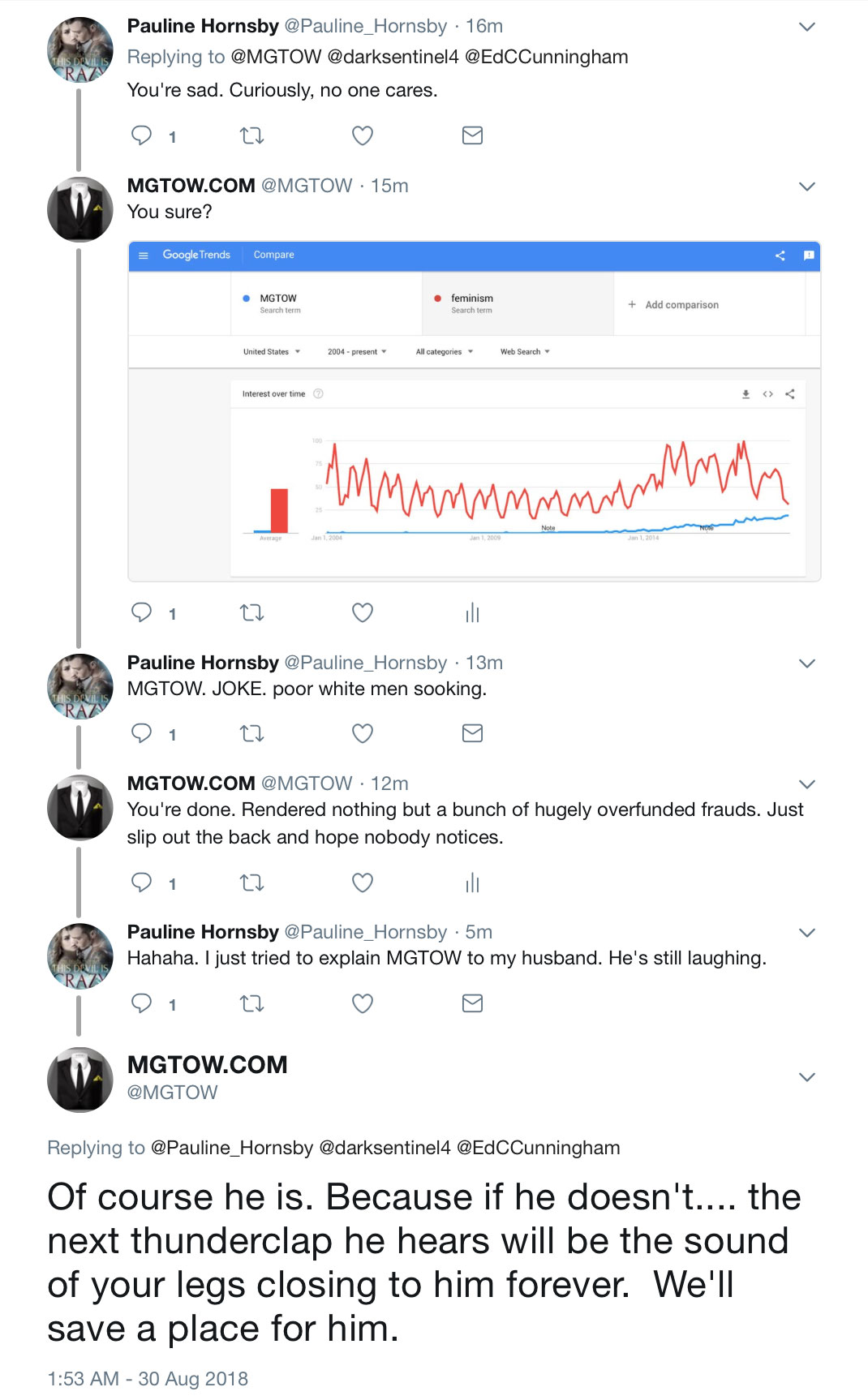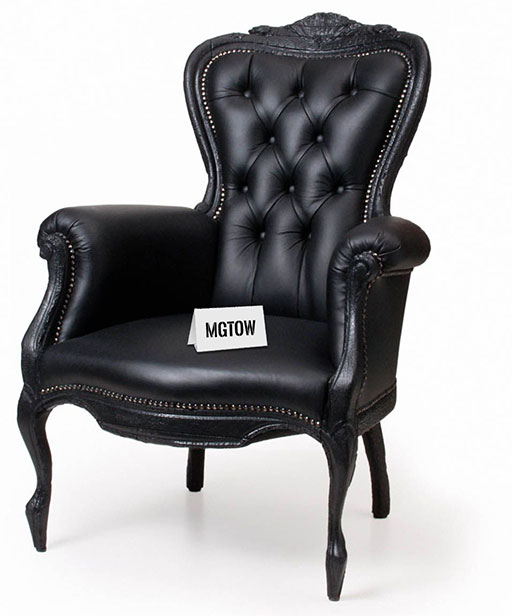This topic contains 8 replies, has 9 voices, and was last updated by ![]() Robert Hallam 3 years, 9 months ago.
Robert Hallam 3 years, 9 months ago.
- AuthorPosts
Found these statistics with source details. Worthy of note are how old some of these are. There are many more single mothers today. These are from the US only.
Sexual activity. In a study of 700 adolescents, researchers found that “compared to families with two natural parents living in the home, adolescents from single-parent families have been found to engage in greater and earlier sexual activity.”
Source: Carol W. Metzler, et al. “The Social Context for Risky Sexual Behavior Among Adolescents,” Journal of Behavioral Medicine 17 (1994).A myriad of maladies. Fatherless children are at a dramatically greater risk of drug and alcohol abuse, mental illness, suicide, poor educational performance, teen pregnancy, and criminality.
Source: U.S. Department of Health and Human Services, National Center for Health Statistics, Survey on Child Health, Washington, DC, 1993.Drinking problems. Teenagers living in single-parent households are more likely to abuse alcohol and at an earlier age compared to children reared in two-parent households
Source: Terry E. Duncan, Susan C. Duncan and Hyman Hops, “The Effects of Family Cohesiveness and Peer Encouragement on the Development of Adolescent Alcohol Use: A Cohort-Sequential Approach to the Analysis of Longitudinal Data,” Journal of Studies on Alcohol 55 (1994).Drug Use: “…the absence of the father in the home affects significantly the behavior of adolescents and results in the greater use of alcohol and marijuana.”
Source: Deane Scott Berman, “Risk Factors Leading to Adolescent Substance Abuse,” Adolescence 30 (1995)Sexual abuse. A study of 156 victims of child sexual abuse found that the majority of the children came from disrupted or single-parent homes; only 31 percent of the children lived with both biological parents. Although stepfamilies make up only about 10 percent of all families, 27 percent of the abused children lived with either a stepfather or the mother’s boyfriend.
Source: Beverly Gomes-Schwartz, Jonathan Horowitz, and Albert P. Cardarelli, “Child Sexual Abuse Victims and Their Treatment,” U.S. Department of Justice, Office of Juvenile Justice and Delinquency Prevention.Child Abuse. Researchers in Michigan determined that “49 percent of all child abuse cases are committed by single mothers.”
Source: Joan Ditson and Sharon Shay, “A Study of Child Abuse in Lansing, Michigan,” Child Abuse and Neglect, 8 (1984).Deadly predictions. A family structure index — a composite index based on the annual rate of children involved in divorce and the percentage of families with children present that are female-headed — is a strong predictor of suicide among young adult and adolescent white males.
Source: Patricia L. McCall and Kenneth C. Land, “Trends in White Male Adolescent, Young-Adult and Elderly Suicide: Are There Common Underlying Structural Factors?” Social Science Research 23, 1994High risk. Fatherless children are at dramatically greater risk of suicide.
Source: U.S. Department of Health and Human Services, National Center for Health Statistics, Survey on Child Health, Washington, DC, 1993.Suicidal Tendencies. In a study of 146 adolescent friends of 26 adolescent suicide victims, teens living in single-parent families are not only more likely to commit suicide but also more likely to suffer from psychological disorders, when compared to teens living in intact families.
Source: David A. Brent, et al. “Post-traumatic Stress Disorder in Peers of Adolescent Suicide Victims: Predisposing Factors and Phenomenology.” Journal of the American Academy of Child and Adolescent Psychiatry 34, 1995.Confused identities. Boys who grow up in father-absent homes are more likely that those in father-present homes to have trouble establishing appropriate sex roles and gender identity.
Source: P.L. Adams, J.R. Milner, and N.A. Schrepf, Fatherless Children, New York, Wiley Press, 1984.Psychiatric Problems. In 1988, a study of preschool children admitted to New Orleans hospitals as psychiatric patients over a 34-month period found that nearly 80 percent came from fatherless homes.
Source: Jack Block, et al. “Parental Functioning and the Home Environment in Families of Divorce,” Journal of the American Academy of Child and Adolescent Psychiatry, 27 (1988)Emotional distress. Children living with a never-married mother are more likely to have been treated for emotional problems.
Source: L. Remez, “Children Who Don’t Live with Both Parents Face Behavioral Problems,” Family Planning Perspectives (January/February 1992).Uncooperative kids. Children reared by a divorced or never-married mother are less cooperative and score lower on tests of intelligence than children reared in intact families. Statistical analysis of the behavior and intelligence of these children revealed “significant detrimental effects” of living in a female-headed household. Growing up in a female-headed household remained a statistical predictor of behavior problems even after adjusting for differences in family income.
Source: Greg L. Duncan, Jeanne Brooks-Gunn and Pamela Kato Klebanov, “Economic Deprivation and Early Childhood Development,” Child Development 65 (1994).
Unstable families, unstable lives. Compared to peers in two-parent homes, black children in single-parent households are more likely to engage in troublesome behavior, and perform poorly in school.
Source: Tom Luster and Hariette Pipes McAdoo, “Factors Related to the Achievement and Adjustment of Young African-American Children.” Child Development 65 (1994): 1080-1094Beyond class lines. Even controlling for variations across groups in parent education, race and other child and family factors, 18- to 22-year-olds from disrupted families were twice as likely to have poor relationships with their mothers and fathers, to show high levels of emotional distress or problem behavior, [and] to have received psychological help.
Source: Nicholas Zill, Donna Morrison, and Mary Jo Coiro, “Long Term Effects of Parental Divorce on Parent-Child Relationships, Adjustment and Achievement in Young Adulthood.” Journal of Family Psychology 7 (1993).Fatherly influence. Children with fathers at home tend to do better in school, are less prone to depression and are more successful in relationships. Children from one-parent families achieve less and get into trouble more than children from two parent families.
Source: One Parent Families and Their Children: The School’s Most Significant Minority, conducted by The Consortium for the Study of School Needs of Children from One Parent Families, co sponsored by the National Association of Elementary School Principals and the Institute for Development of Educational Activities, a division of the Charles F. Kettering Foundation, Arlington, VA., 1980Divorce disorders. Children whose parents separate are significantly more likely to engage in early sexual activity, abuse drugs, and experience conduct and mood disorders. This effect is especially strong for children whose parents separated when they were five years old or younger.
Source: David M. Fergusson, John Horwood and Michael T. Lynsky, “Parental Separation, Adolescent Psychopathology, and Problem Behaviors,” Journal of the American Academy of Child and Adolescent Psychiatry 33 (1944).Troubled marriages,troubled kids. Compared to peers living with both biological parents, sons and daughters of divorced or separated parents exhibited significantly more conduct problems. Daughters of divorced or separated mothers evidenced significantly higher rates of internalizing problems, such as anxiety or depression.
Source: Denise B. Kandel, Emily Rosenbaum and Kevin Chen, “Impact of Maternal Drug Use and Life Experiences on Preadolescent Children Born to Teenage Mothers,” Journal of Marriage and the Family56 (1994).Hungry for love. “Father hunger” often afflicts boys age one and two whose fathers are suddenly and permanently absent. Sleep disturbances, such as trouble falling asleep, nightmares, and night terrors frequently begin within one to three months after the father leaves home.
Source: Alfred A. Messer, “Boys Father Hunger: The Missing Father Syndrome,” Medical Aspects of Human Sexuality, January 1989.Disturbing news: Children of never-married mothers are more than twice as likely to have been treated for an emotional or behavioral problem.
Source: U.S. Department of Health and Human Services, National Center for Health Statistics, National Health Interview Survey, Hyattsille, MD, 1988Poor and in trouble: A 1988 Department of Health and Human Services study found that at every income level except the very highest (over $50,000 a year), children living with never-married mothers were more likely than their counterparts in two-parent families to have been expelled or suspended from school, to display emotional problems, and to engage in antisocial behavior.
Source: James Q. Wilson, “In Loco Parentis: Helping Children When Families Fail Them,” The Brookings Review, Fall 1993.Fatherless aggression: In a longitudinal study of 1,197 fourth-grade students, researchers observed “greater levels of aggression in boys from mother-only households than from boys in mother-father households.”
Source: N. Vaden-Kierman, N. Ialongo, J. Pearson, and S. Kellam, “Household Family Structure and Children’s Aggressive Behavior: A Longitudinal Study of Urban Elementary School Children,” Journal of Abnormal Child Psychology 23, no. 5 (1995).Act now, pay later: “Children from mother-only families have less of an ability to delay gratification and poorer impulse control (that is, control over anger and sexual gratification.) These children also have a weaker sense of conscience or sense of right and wrong.”
Source: E.M. Hetherington and B. Martin, “Family Interaction” in H.C. Quay and J.S. Werry (eds.), Psychopathological Disorders of Childhood. (New York: John Wiley & Sons, 1979)I’d be interested to hear if any of you have witnessed any of these first hand. I know I’ve witnessed a lot of them even in the UK.
More to follow….Women are so bad, if they changed the law so I kept the house, I still wouldn't marry one. I'd rather be homeless.
The evidence is compelling. Plus, it matches my observations of my school classmates.
Society asks MGTOWs: Why are you not making more tax-slaves?
Not surprising. Yet western media continues to push the “You go girl” feminist garbage contributing to the decline of the family.
yup, nothing new or surprising here.
Child Abuse. Researchers in Michigan determined that “49 percent of all child abuse cases are committed by single mothers.”
Source: Joan Ditson and Sharon Shay, “A Study of Child Abuse in Lansing, Michigan,” Child Abuse and Neglect, 8 (1984).And the majority of the other 51% are committed by the serial boyfriends, female friends, or relatives of single mothers.
Actual fathers? Not so much.
One has to wonder just where the f~~~ they get all that “tender years doctrine” bulls~~~ from.

Anonymous54Womem can say i dont need no man,but damn it children do.
Sexual abuse. A study of 156 victims of child sexual abuse found that the majority of the children came from disrupted or single-parent homes; only 31 percent of the children lived with both biological parents. Although stepfamilies make up only about 10 percent of all families, 27 percent of the abused children lived with either a stepfather or the mother’s boyfriend.
Apart from the main topic, a little digression from the gynocentrism of such stat.
Let’s see:
31% abused children lived with both biological parents
27% abused children lived with either a stepfather or the mother’s boyfriend
31+27 = 58
SO
42% abused children have been abused just only by their mothers, because they lived just only with their mother.SUPREME LEADER KIM JONG-UN'S FASHION STYLIST - if you want a new look or if you're a very beautiful trans you can call me, phone number +85079255312 / mobile 01921421211. The worth of a man isn't the usefulness that women get from him. Avoiding living with a woman, a man isn't rejecting a lot of sex: he's rejecting sexual starvation. MGTOW IS TACKLING DOMESTIC VIOLENCE IN COMPLIANCE WITH CONVENTION OF ISTANBUL: http://www.coe.int/en/web/conventions/full-list/-/conventions/rms/090000168008482e --- Article 4, Section 4 "Special measures that are necessary to prevent and protect women from gender-based violence shall not be considered discrimination under the terms of this Convention". WHAT I LEARNT FROM A GENDER STUDIES CLASS IN LUND, SWEDEN: every time feminists accuses men of doing something, odds are likely either them or persons associated with them are doing the exact same thing but a lot worse. WHO I'M RIGHT NOW https://www.youtube.com/watch?v=J1okpAj7Fhw Basically my former life have been a conflict between this https://www.youtube.com/watch?v=yz_RQVkvke4 and this https://www.youtube.com/watch?v=dFIMeyTK-sU That's, more or less, all about me.
I seriously thought this was Tommy Sotomayor’s project finished from the title of this thread.
But, but, but, but, you don’t understand. I wanted a divorce; I wanted him out of the house; I wasn’t getting my needs met; so I had to look elsewhere. Where was I going to get my emotional needs fulfilled; my, my, my, my,……. Besides, I didn’t agree with the way he disciplined the kids.
- AuthorPosts
You must be logged in to reply to this topic.

921526
921524
919244
916783
915526
915524
915354
915129
914037
909862
908811
908810
908500
908465
908464
908300
907963
907895
907477
902002
901301
901106
901105
901104
901024
901017
900393
900392
900391
900390
899038
898980
896844
896798
896797
895983
895850
895848
893740
893036
891671
891670
891336
891017
890865
889894
889741
889058
888157
887960
887768
886321
886306
885519
884948
883951
881340
881339
880491
878671
878351
877678













